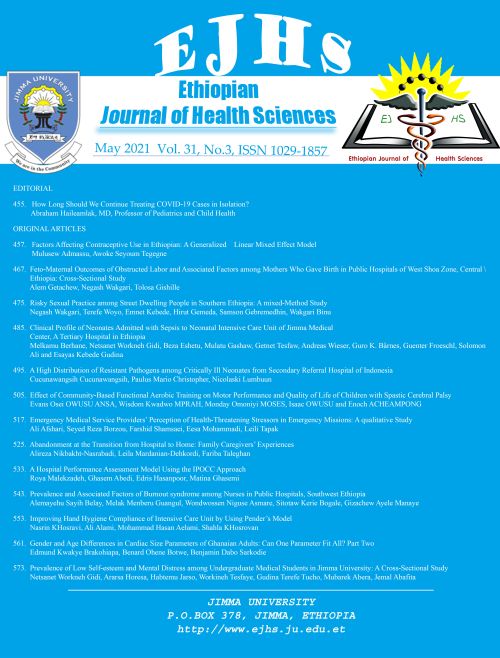Main Article Content
Antimicrobial resistance and ESBL profile of Uropathogens among pregnant women at Edna Adan Hospital, Hargeisa, Somaliland
Abstract
BACKGROUND: The emergence and spread of antimicrobial resistance (AMR) among uropathogens is increasing, especially in resource limited settings due to a number of reasons. The production of Extended Spectrum β-Lactamase (ESBL) by some strains of E. coli and methicillin resistant Staphylococcus species, limits the choice of antimicrobials in the treatment of urinary tract infection (UTI) globally. However, little is known about the type of uropathogenes and their current AMR profile among pregnant women in Hargeisa, Somaliland.
METHODS: Clean-catch mid-stream urine samples were collected and processed for bacteriological culture and antimicrobial sensitivity testing (AST). Ceftazidime (30μg) and Cefotaxime (30μg) disks were used for ESBL screening as per CLSI guideline and each ESBL screening positive isolate were phenotypically confirmed by a combination disk test.
RESULTS: Among 376 study participants, 79 (21.0%) had significant bacteriuria (SBU). Majority at 58(73.4%) of the isolates were Gram-negative. The most predominant isolate was E.coli, 36(45.6%) followed by K. pneumonea 16(20.3%) and S. aureus at 9(11.4 %). The proportion of ESBL producing isolates was 25(32.9%). Gram-negatives showed high level resistance to ampicillin, amoxicillin, cefotaxime, and cephalexin at 87%, 85%, 57%, and 52%, respectively. Previous history of UTI, monthly income, educational status and having dysuria were significantly associated with SBU (p<0.05).
CONCLUSION: Relatively high prevalence of uropathogens and an increased level of drug resistance were documented. Therefore, continued surveillance on the type of uropathogens and their AMR pattern is needed to ensure appropriate recommendations for the rational empirical treatment of UTI and for policy input.






